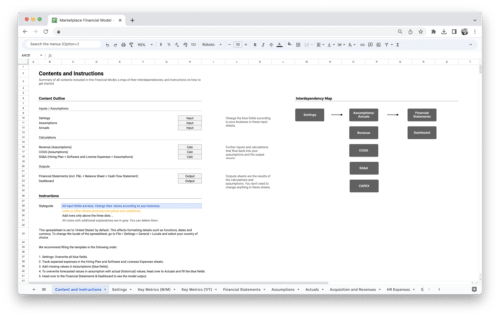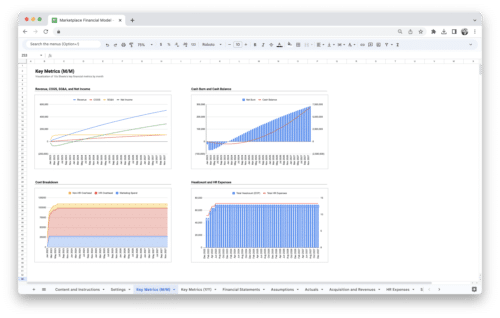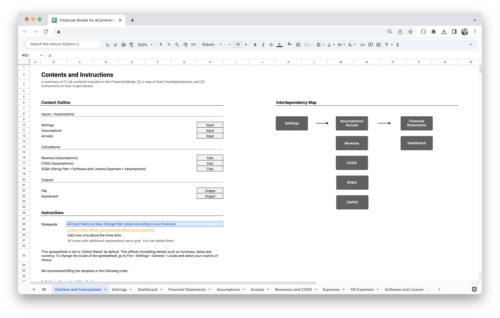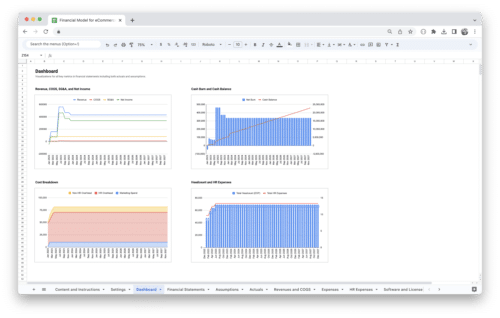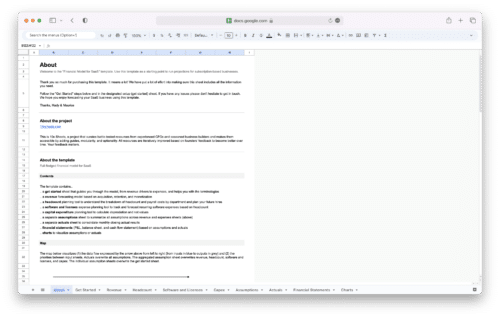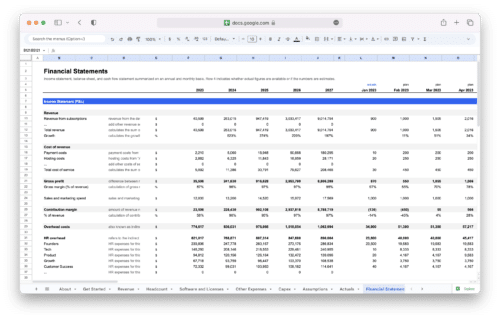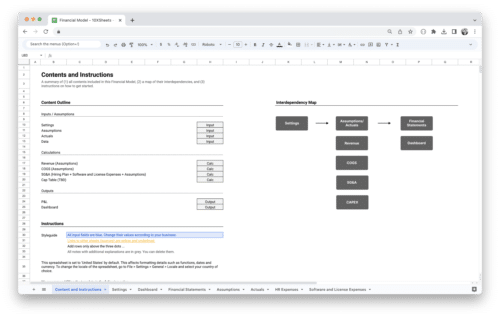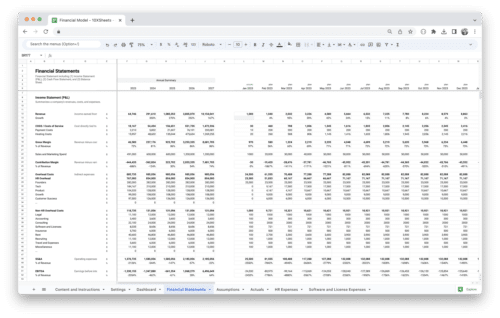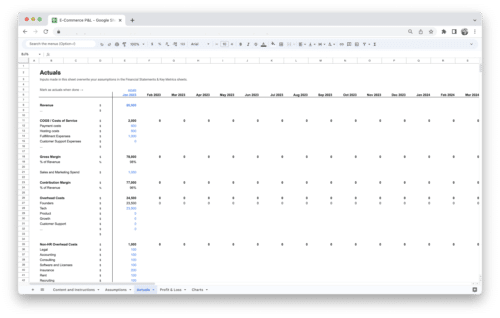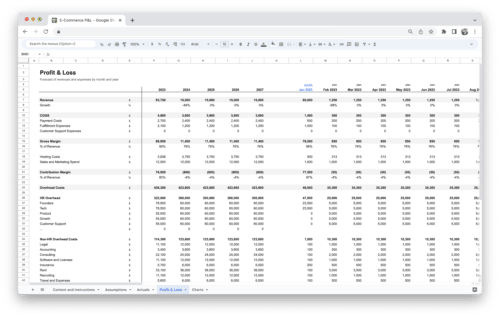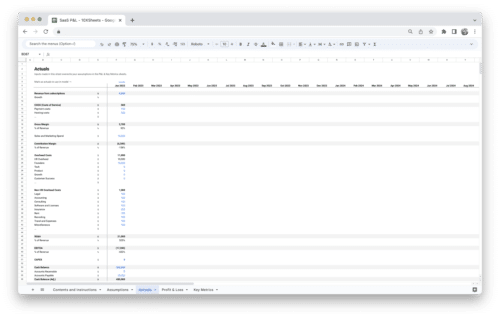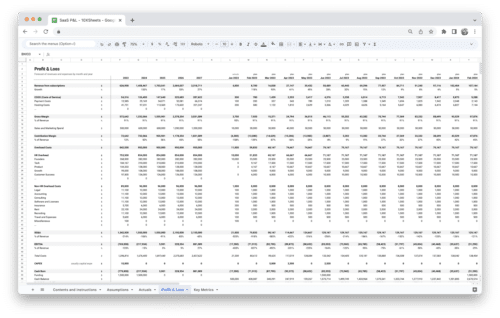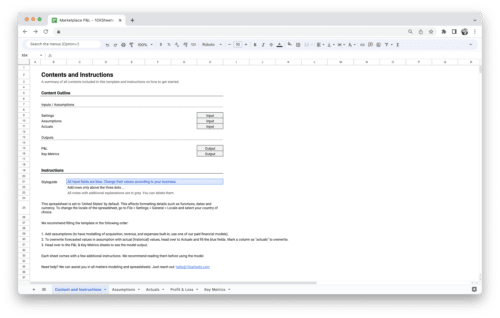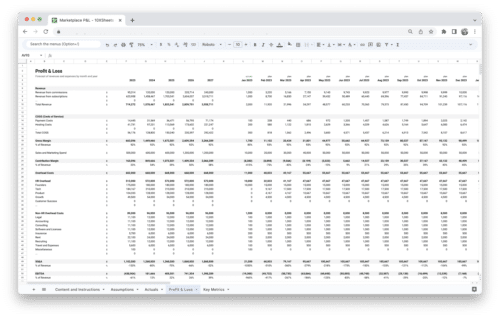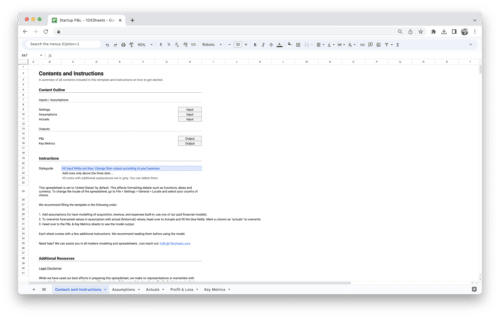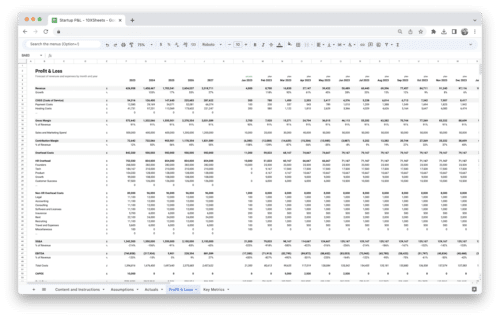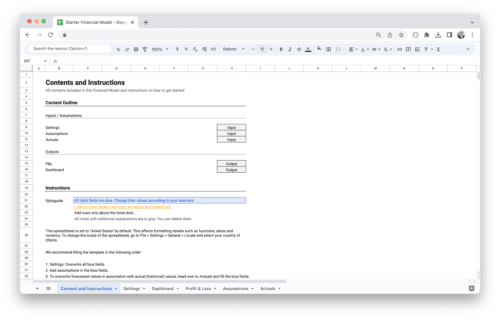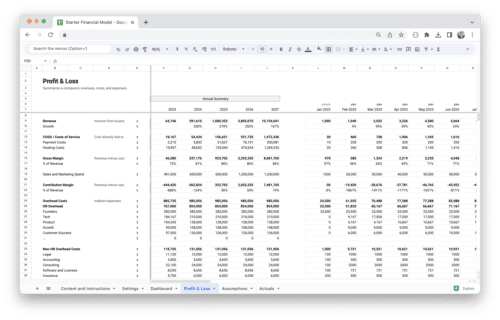In today’s highly competitive business landscape, it is essential for companies to have a deep understanding of their growth performance. This is where growth metrics come into play. Growth metrics are quantifiable measurements that provide valuable insights into the health and progress of a business. By tracking and analyzing those success metrics, businesses can make informed decisions, identify areas for improvement, and drive sustainable growth.
What are Growth Metrics?
Growth metrics, also known as key performance indicators (KPIs), are numerical values that indicate the progress and success of a business in achieving its growth goals. These metrics are specific to each business and industry, reflecting different aspects of growth such as revenue, user acquisition, engagement, retention, and financial performance. By monitoring these metrics over time, businesses can evaluate their performance and make data-driven decisions to optimize growth strategies.
Importance of Growth Metrics in Business
Growth metrics play a crucial role in driving business success. Here are some key reasons why growth metrics are important:
- Performance Evaluation: They provide an objective assessment of a company’s performance, enabling businesses to measure their success against predefined goals and benchmarks.
- Data-Driven Decision Making: By tracking growth metrics, businesses can gather actionable insights and make informed decisions to optimize their growth strategies.
- Identifying Growth Opportunities: They help identify areas of opportunity and potential bottlenecks, allowing businesses to allocate resources strategically and focus on high-priority growth initiatives.
- Benchmarking Against Competitors: They provide a benchmark for comparing performance against industry peers, enabling businesses to identify competitive advantages or areas that need improvement.
- Monitoring Long-Term Success: By tracking growth metrics over time, businesses can evaluate the effectiveness of their growth strategies and make adjustments to ensure long-term success.
Benefits of Using Growth Metrics
Utilizing growth metrics offers numerous benefits to businesses looking to drive sustainable growth. Some of the key benefits include:
- Visibility and Transparency: They provide a clear and transparent view of a company’s performance, allowing stakeholders to understand the progress and direction of the business.
- Alignment of Goals: By establishing clear metrics, businesses can align their goals and objectives across different departments and teams, fostering a cohesive growth-focused culture.
- Efficiency and Resource Optimization: They enable businesses to identify inefficient processes or areas that require additional resources, helping optimize resource allocation for maximum impact.
- Proactive Problem Solving: Tracking growth metrics allows businesses to identify issues or obstacles early on, enabling proactive problem-solving and minimizing potential risks.
- Improved Investor Confidence: Well-defined metrics provide investors and stakeholders with a clear understanding of a company’s growth trajectory, instilling confidence and attracting potential investors.
Now that we understand the significance of growth metrics, let’s explore some key ones that businesses should track for success.
Key Growth Metrics for Business Success
To effectively monitor and evaluate growth, businesses need to track various metrics across different areas of their operations. Here are some key growth metrics that play a vital role in business success:
Revenue Metrics
Revenue metrics provide insights into the financial health and performance of a business. Tracking these metrics helps businesses understand their revenue streams and optimize strategies to drive growth.
- Gross Revenue: The total revenue generated by a business before deducting any expenses or taxes. It represents the overall financial performance of the company.
- Net Revenue: Also known as the “bottom line,” net revenue is the revenue left after deducting all expenses, such as production costs, operational expenses, and taxes. It provides a more accurate picture of a company’s profitability.
- Average Revenue per User (ARPU): This metric calculates the average revenue generated per user or customer. ARPU helps businesses assess the value and monetization potential of their user base.
- Monthly Recurring Revenue (MRR): MRR represents the predictable and recurring revenue generated by subscription-based businesses. Tracking MRR provides insights into the stability and growth potential of a company’s subscription model.
User Acquisition Metrics
User acquisition metrics measure the effectiveness and efficiency of strategies implemented to attract and convert new users or customers. These metrics are crucial for understanding the impact of marketing and sales efforts on business growth.
- Cost per Acquisition (CPA): CPA calculates the average cost incurred to acquire a new user or customer. It helps businesses evaluate the effectiveness of their marketing campaigns and optimize their customer acquisition strategies.
- Conversion Rate: Conversion rate measures the percentage of visitors or leads that convert into paying customers. It provides insights into the effectiveness of a company’s website, landing pages, and sales funnels.
- Customer Acquisition Cost (CAC): CAC determines the average cost required to acquire a new customer. By comparing CAC with the customer’s lifetime value (CLTV), businesses can assess the profitability of their customer acquisition efforts.
- Customer Lifetime Value (CLTV): CLTV represents the total revenue a business can expect from a single customer over their entire relationship with the company. This metric helps businesses evaluate the long-term value of their customer base.
Engagement Metrics
Engagement metrics measure the level of interaction and involvement of users or customers with a business’s products, services, or content. Tracking these metrics helps businesses assess user satisfaction and identify areas for improvement.
- Monthly Active Users (MAU): MAU measures the number of unique users or customers who engage with a business’s products or services within a month. Tracking MAU helps businesses understand their user base’s size and growth rate.
- Daily Active Users (DAU): DAU represents the number of unique users or customers who engage with a business’s products or services on a daily basis. It provides insights into user engagement trends and patterns.
- Time on Page/Session Duration: This metric measures the average time users spend on a specific web page or within a session on a website or application. Longer time on page or session duration indicates higher user engagement and interest.
- Bounce Rate: Bounce rate measures the percentage of users who leave a website or application without taking any further action after viewing a single page. A high bounce rate may indicate a lack of engagement or relevance.
These are just a few examples of the key growth metrics businesses can track to gain insights into their performance and identify areas for improvement.
How to Track and Measure Growth Metrics?
Tracking and measuring growth metrics accurately is essential to derive meaningful insights and drive informed decision-making. Here are the key steps to effectively track and measure growth metrics in your business:
Setting Clear Goals and Objectives
- Define your business objectives: Clearly outline your business objectives and growth targets. Whether it’s increasing revenue, expanding user base, or improving user engagement, setting clear goals provides a foundation for selecting relevant growth metrics.
- Break down goals into actionable metrics: Identify specific metrics that align with your business objectives. For example, if your goal is to increase revenue, relevant metrics could include gross revenue, net revenue, or average revenue per user.
Choosing the Right Tools and Platforms
- Select analytics and tracking tools: Choose analytics platforms and tools that can effectively track and measure your growth metrics. Popular options include Google Analytics, Mixpanel, Kissmetrics, or custom-built analytics solutions.
- Implement tracking systems: Integrate tracking systems into your website, application, or other relevant platforms. Ensure proper implementation to accurately capture data related to your metrics.
Implementing Analytics and Tracking Systems
- Define event tracking: Set up event tracking within your analytics platform to capture user actions and interactions that are relevant to your growth metrics. This may include events such as sign-ups, purchases, or content engagement.
- Configure conversion tracking: Configure conversion tracking to measure key actions that align with your business goals. This allows you to track conversions and attribute them to specific marketing channels or campaigns.
Defining Key Performance Indicators (KPIs)
- Identify KPIs for each growth metric: Define specific KPIs for each growth metric you want to track. For example, if your growth metric is conversion rate, the corresponding KPI could be “percentage increase in conversion rate over the next quarter.”
- Establish baseline and targets: Set a baseline for each growth metric based on historical data or industry benchmarks. Then, define realistic targets to strive for based on your business objectives.
Now that you have implemented the necessary tracking systems and defined your growth metrics and KPIs, it’s time to move on to the next step: analyzing and interpreting your growth metrics effectively.
Analyzing and Interpreting Growth Metrics
Analyzing and interpreting growth metrics is a critical step in deriving actionable insights and making informed decisions to drive growth. Here are the key aspects to consider when analyzing and interpreting your metrics:
Data Visualization and Reporting
- Create visual reports: Utilize data visualization tools to present your growth metrics in visually appealing and easily understandable formats. Charts, graphs, and dashboards can help identify trends, patterns, and correlations.
- Customize reports: Tailor your reports to meet the specific needs of different stakeholders, such as executives, marketing teams, or investors. Highlight the most relevant growth metrics and provide context and explanations where necessary.
Identifying Trends and Patterns
- Track growth metric trends: Monitor the performance of your metrics over time to identify trends. Look for patterns of growth, stagnation, or decline to understand the impact of your strategies and initiatives.
- Analyze correlation between metrics: Identify correlations or relationships between different growth metrics. For example, you may find that an increase in user engagement (measured by time on page) correlates with higher conversion rates.
Comparing Metrics Against Industry Benchmarks
- Research industry benchmarks: Understand the benchmarks and average performance metrics specific to your industry. This provides a point of reference for evaluating your own growth metrics and identifying areas for improvement.
- Benchmark against competitors: Compare your metrics against direct competitors to gauge your relative performance. This analysis can uncover competitive advantages or highlight areas where you need to catch up.
Conducting A/B Testing and Experiments
- Set up A/B tests: Conduct A/B tests to experiment with different strategies or variations that may impact your growth metrics. For example, test different website layouts, pricing models, or marketing messages to determine the most effective approach.
- Measure and analyze results: Track the impact of A/B tests on your growth metrics. Compare the performance of different variations and determine which ones yield the desired results.
Utilizing Cohort Analysis
- Segment your user base: Divide your user base into cohorts based on specific characteristics or timeframes. For example, cohort analysis could group users based on the month they signed up or their geographic location.
- Analyze cohort performance: Compare the performance of different cohorts over time to identify trends and patterns. Cohort analysis helps uncover insights about user behavior, retention rates, and the impact of different strategies on specific user segments.
By effectively analyzing and interpreting your growth metrics, you can gain valuable insights into the performance of your business and identify opportunities for improvement.
Strategies for Improving Growth Metrics
Improving growth metrics requires a systematic approach and a focus on specific strategies. Here are some key strategies businesses can implement to optimize their metrics and drive business success:
Conversion Rate Optimization (CRO)
- Perform thorough website and landing page audits to identify areas for improvement in user experience, design, and call-to-action placement.
- Utilize A/B testing to experiment with different variations and elements that may impact conversion rates.
- Implement persuasive and compelling copywriting techniques to enhance the persuasiveness of landing pages and product descriptions.
User Experience (UX) Enhancement
- Conduct user research and usability testing to understand user preferences, pain points, and expectations.
- Improve website and application navigation, responsiveness, and loading speed to enhance the overall user experience.
- Optimize mobile user experience to cater to the growing number of users accessing websites and applications through mobile devices.
Customer Retention and Loyalty Programs
- Develop and implement customer retention strategies, such as personalized communication, loyalty rewards, or exclusive offers.
- Monitor customer satisfaction metrics, such as Net Promoter Score (NPS), and take proactive measures to address negative feedback and improve customer experience.
- Establish customer success teams or support systems to ensure ongoing customer satisfaction and foster long-term relationships.
Pricing and Packaging Strategies
- Analyze pricing models and consider different pricing strategies, such as tiered pricing, freemium models, or value-based pricing.
- Conduct market research and competitor analysis to identify optimal price points that maximize revenue while remaining competitive.
- Experiment with packaging options and product bundling to provide more value to customers and encourage higher average order values.
Referral and Influencer Marketing
- Implement referral programs that incentivize existing customers to refer new users or customers.
- Collaborate with relevant influencers or industry experts to promote your products or services, leveraging their audience and credibility.
- Track and measure the impact of referral and influencer marketing efforts on user acquisition and revenue growth.
By implementing these strategies and optimizing your growth metrics, you can enhance your business’s performance and drive sustainable growth. However, analyzing and improving metrics come with their own set of challenges.
Overcoming Challenges and Pitfalls in Growth Metrics Analysis
Analyzing and interpreting growth metrics can be complex and challenging. Here are some common challenges and pitfalls to be aware of and strategies to overcome them:
Data Accuracy and Integrity
- Ensure data integrity and accuracy by implementing robust tracking systems and regularly auditing your data sources.
- Regularly validate and cross-reference data from different sources to identify discrepancies or errors.
- Implement data governance practices and protocols to maintain data quality and reliability.
Selection of Relevant Metrics
- Align your growth metrics with your business objectives and goals. Avoid tracking metrics that do not directly contribute to your desired outcomes.
- Continuously review and reassess your metrics to ensure their relevance as your business evolves.
- Prioritize a few key metrics rather than overwhelming yourself with a vast number of metrics.
Avoiding Vanity Metrics
- Focus on meaningful metrics that directly impact your business objectives, such as revenue growth, user retention, or customer lifetime value.
- Avoid vanity metrics that may look impressive but do not provide actionable insights or drive meaningful business decisions.
Overcoming Data Overload
- Streamline your data collection processes to focus on relevant and actionable data points.
- Leverage automation and data visualization tools to simplify data analysis and interpretation.
- Regularly review and refine your data collection and reporting processes to ensure efficiency.
Understanding Causation vs. Correlation
- Differentiate between causal relationships and correlation when analyzing your growth metrics.
- Conduct an in-depth analysis and consider external factors or variables that may impact your metrics.
- Utilize statistical analysis techniques to identify and validate causal relationships where possible.
By being aware of these challenges and pitfalls, you can enhance the accuracy and effectiveness of your growth metrics analysis and decision-making processes.
Examples of Growth Metrics Success
Examining examples can provide valuable insights into how businesses effectively leverage growth metrics to achieve success. Here are three examples of companies can use growth metrics strategies to drive remarkable results:
Company A: Achieving Rapid User Acquisition Through Strategic Partnerships
- By leveraging strategic partnerships with complementary businesses, Company A successfully expanded its user base by 200% within six months.
- Growth metrics such as CPA and conversion rate were closely monitored to track the effectiveness of different partnership initiatives.
- The company utilized referral marketing programs to incentivize existing users to refer new users, resulting in exponential user growth.
Company B: Leveraging Data Analysis to Improve Retention Rates
- Company B implemented data-driven strategies to improve customer retention rates.
- By closely monitoring retention metrics, such as churn rate and customer loyalty, the company identified key pain points and implemented targeted solutions.
- Through personalized communication, improved onboarding processes, and enhanced customer support, Company B successfully reduced the churn rate by 30% and increased customer lifetime value.
Company C: Scaling Revenue through Effective Pricing and Upselling Strategies
- Company C conducted extensive market research and competitor analysis to optimize its pricing and packaging strategies.
- By experimenting with different pricing models and upselling techniques, the company achieved a 20% increase in average order value and a 15% growth in revenue.
- Key metrics such as average revenue per user (ARPU) and profit margin were closely monitored to assess the impact of pricing and upselling strategies.
These examples illustrate the power of utilizing growth metrics effectively to drive business success.
Conclusion
In conclusion, growth metrics play a pivotal role in driving business success. By tracking and analyzing revenue, user acquisition, engagement, retention, and financial metrics, businesses can gain valuable insights into their performance and make informed decisions to optimize growth strategies.
Effective tracking and measurement of growth metrics require setting clear goals, choosing the right tools, implementing analytics and tracking systems, defining key performance indicators, and establishing baselines and targets. Analyzing and interpreting your metrics involve data visualization, identifying trends, benchmarking against industry standards, conducting A/B testing, and utilizing cohort analysis.
Strategies for improving growth metrics include conversion rate optimization, user experience enhancement, customer retention and loyalty programs, pricing and packaging strategies, and referral and influencer marketing. It is essential to overcome challenges and pitfalls in your metrics analysis, such as data accuracy, relevant metric selection, vanity metrics, data overload, and understanding causation versus correlation.
By understanding and effectively utilizing growth metrics, businesses can drive sustainable growth, make data-driven decisions, and achieve long-term success in the dynamic and competitive business landscape.
Get Started With a Prebuilt Template!
Looking to streamline your business financial modeling process with a prebuilt customizable template? Say goodbye to the hassle of building a financial model from scratch and get started right away with one of our premium templates.
- Save time with no need to create a financial model from scratch.
- Reduce errors with prebuilt formulas and calculations.
- Customize to your needs by adding/deleting sections and adjusting formulas.
- Automatically calculate key metrics for valuable insights.
- Make informed decisions about your strategy and goals with a clear picture of your business performance and financial health.

